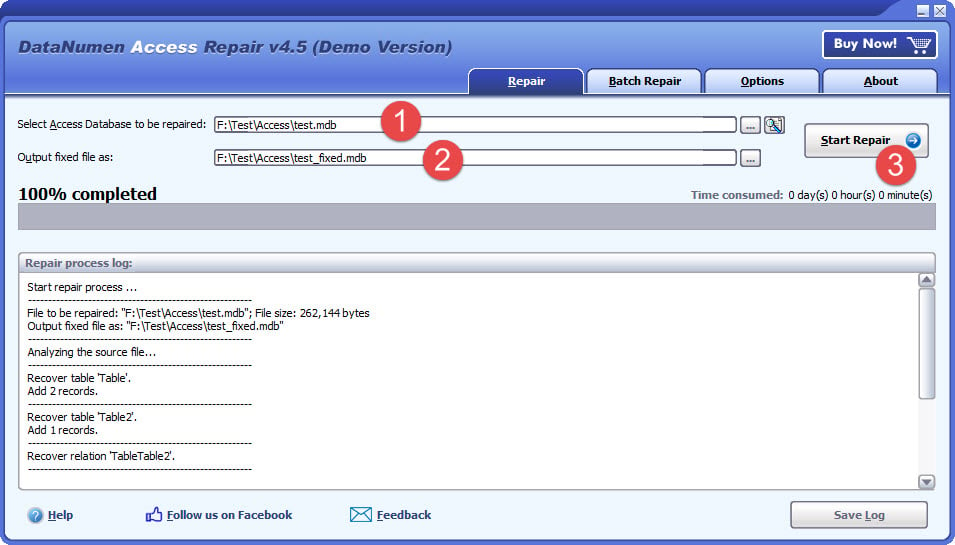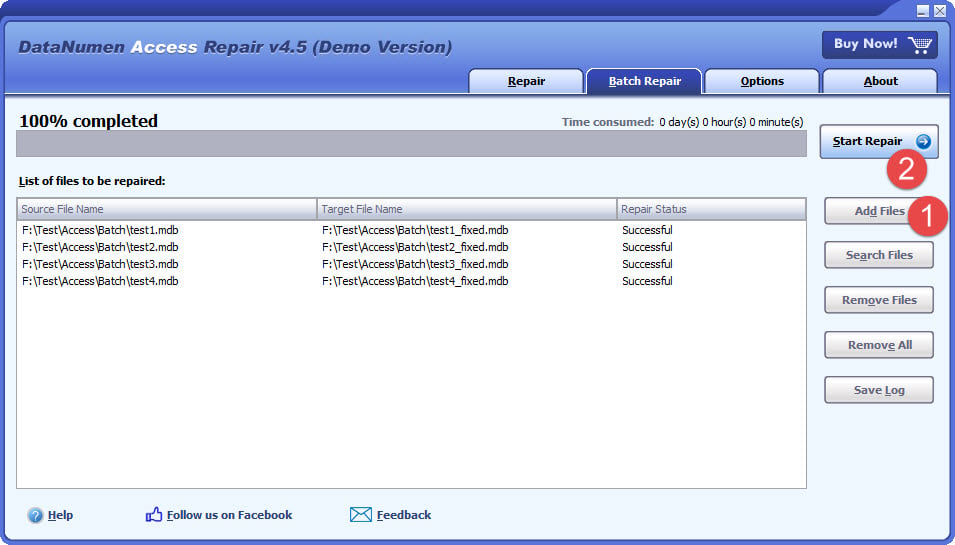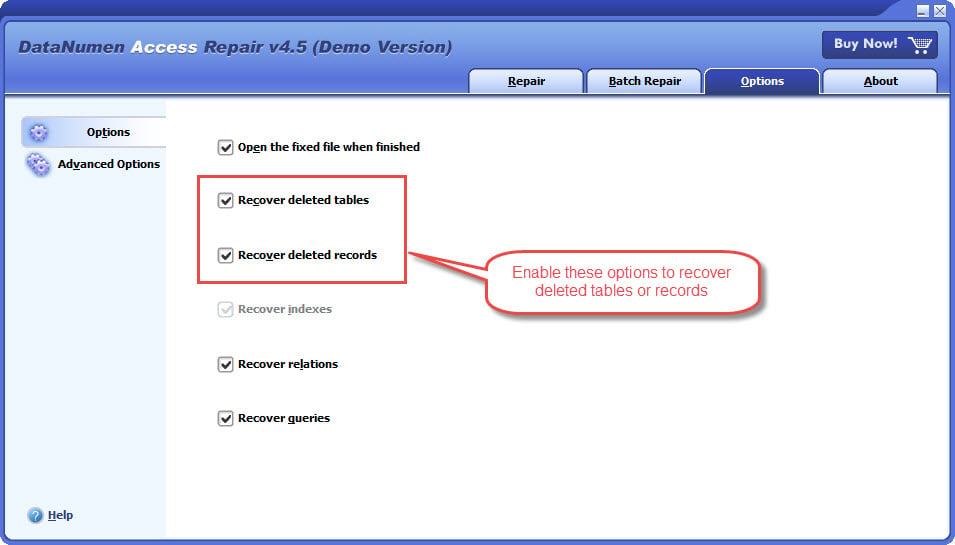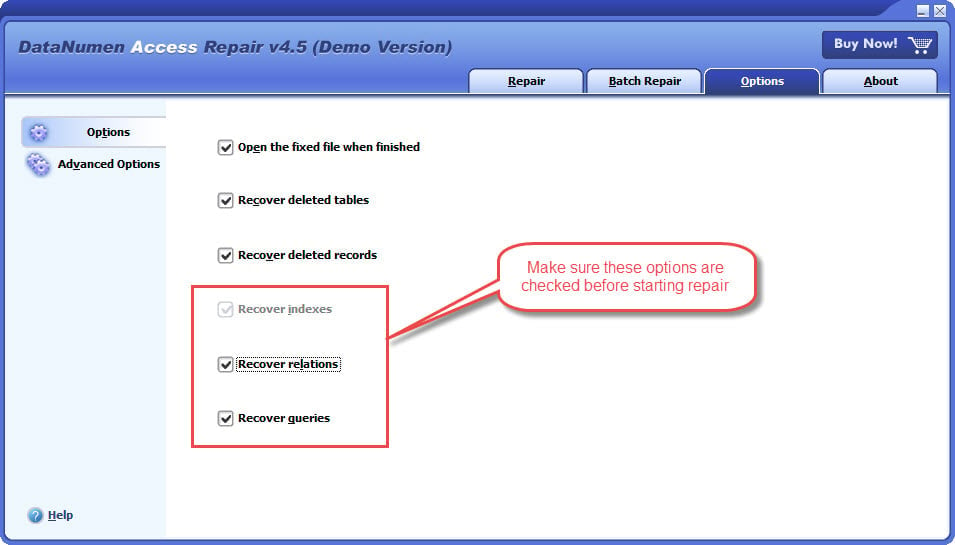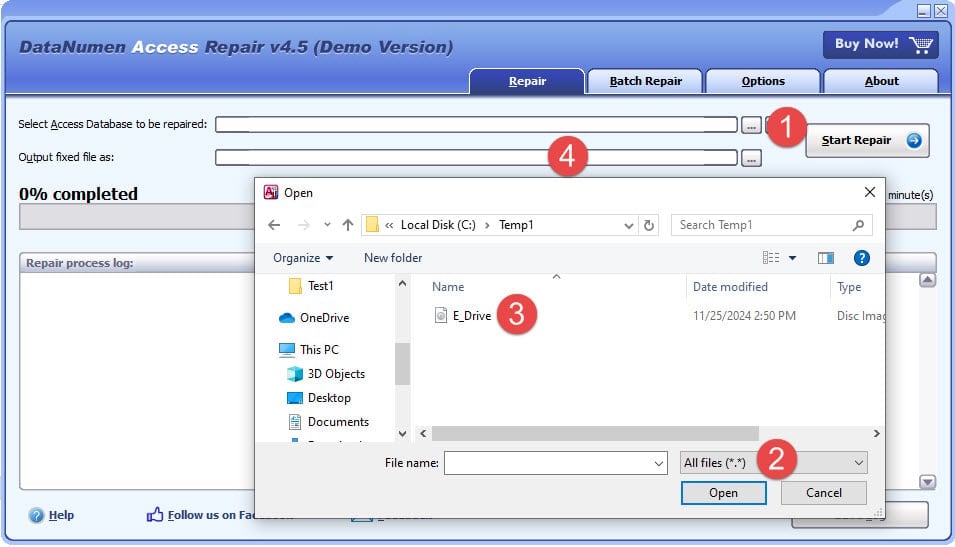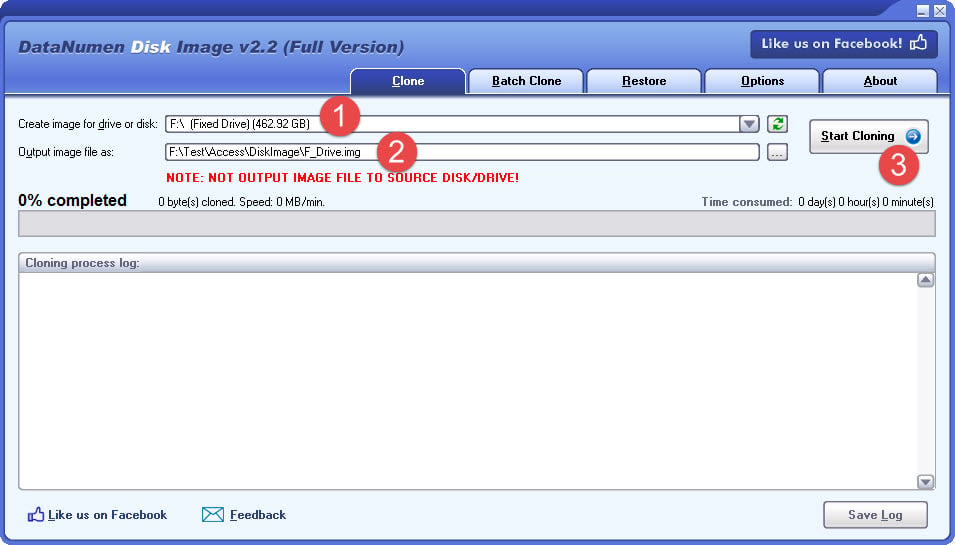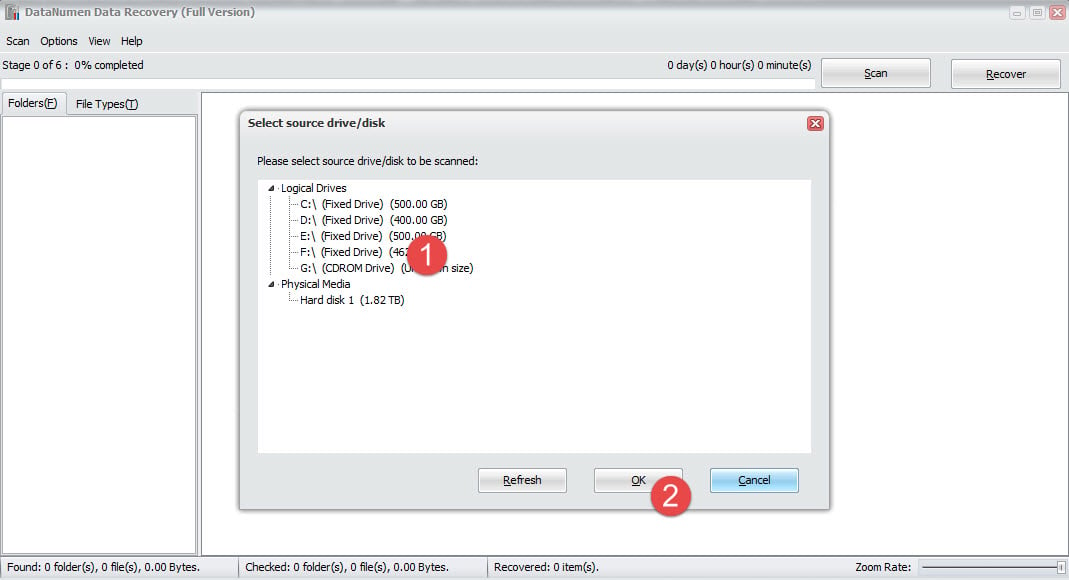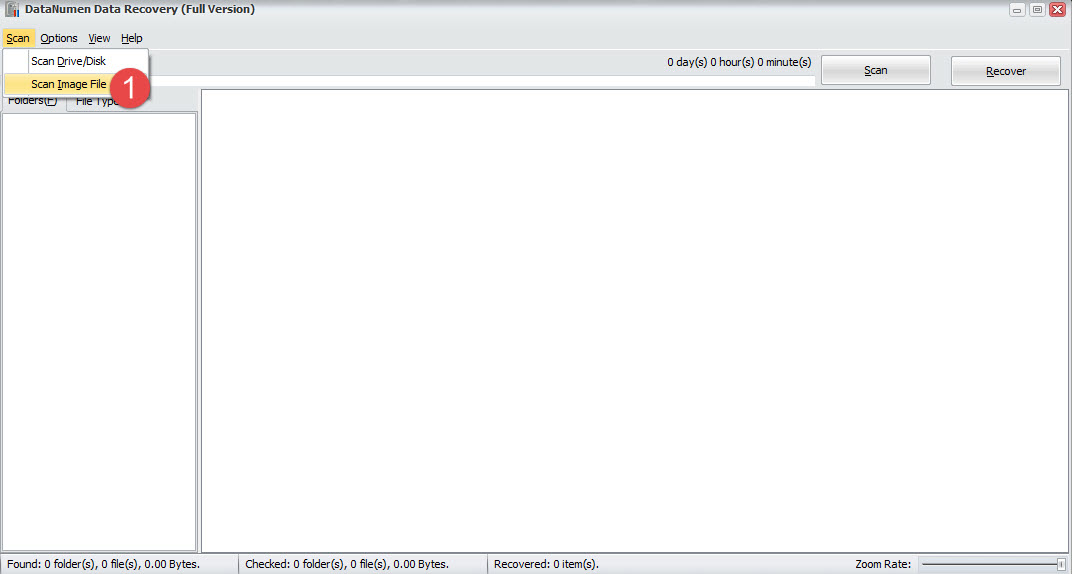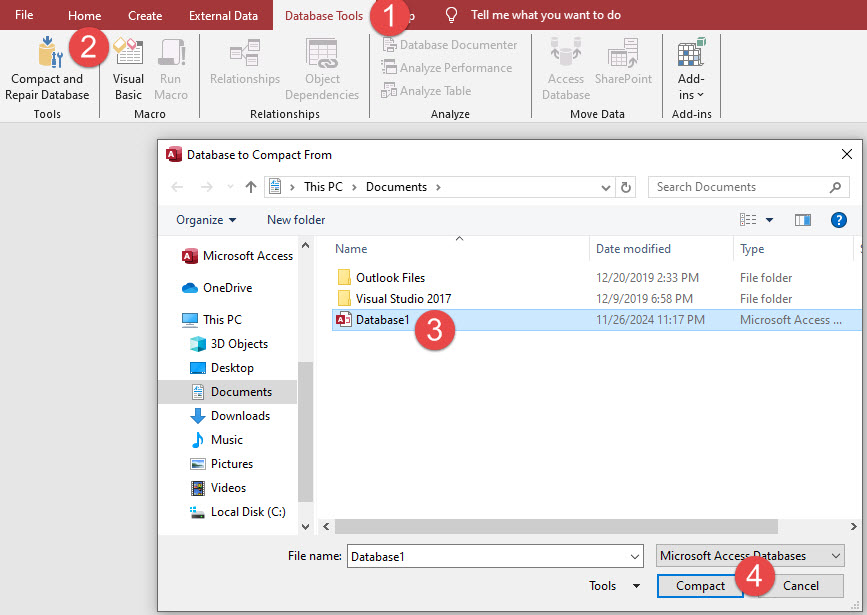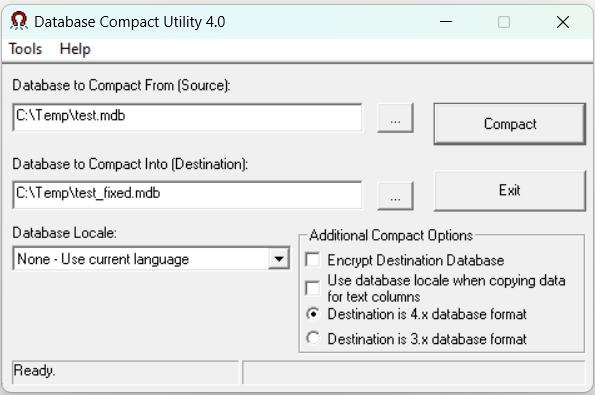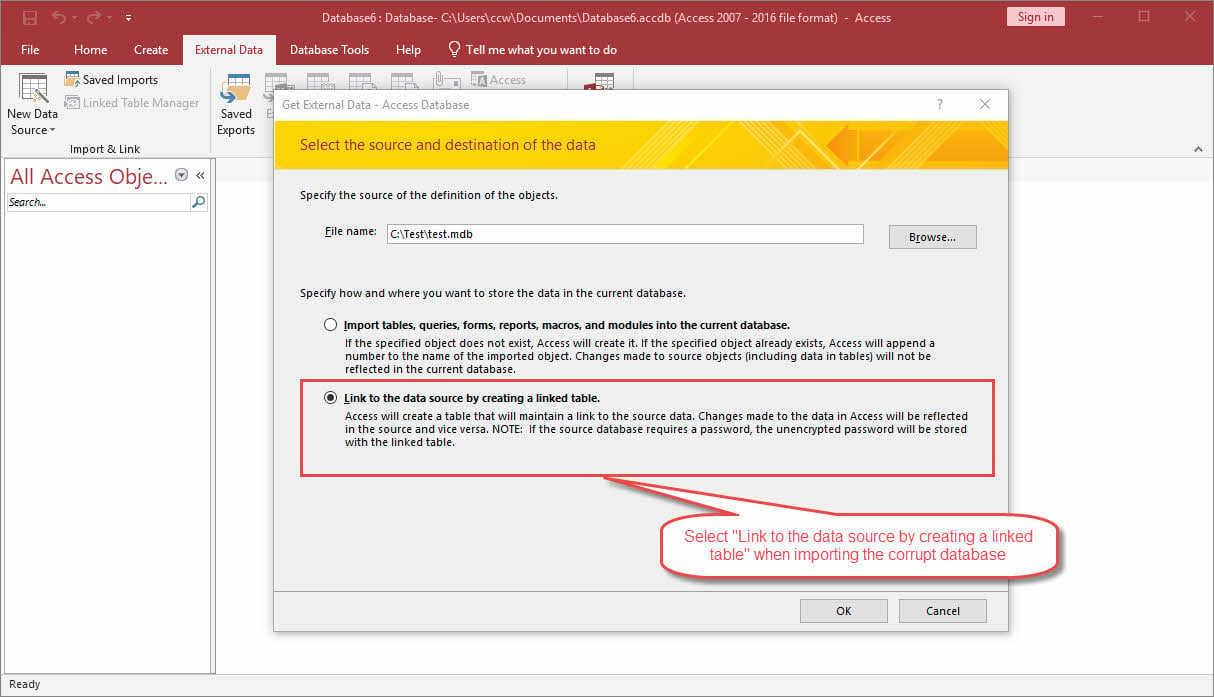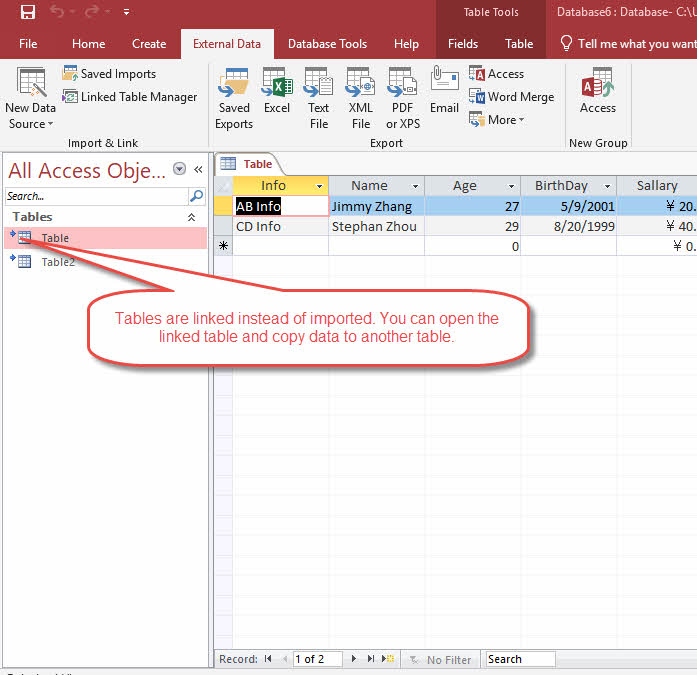Learn 14 best ways to repair corrupt Access database files (MDB/ACCDB), including expert tools, built-in and manual recovery options.
Statistics show that 58% of organizations face database corruption at least once annually. A more alarming fact reveals that 40% of businesses fail to recover from catastrophic data loss.
Your Access database might stop working or show corruption signs without warning. This situation creates immense frustration. The good news is that multiple solutions exist to fix corrupt Access database files, repair MS Access database errors, and recover deleted records.
Several proven methods can help repair corrupted Access databases. These range from built-in repair tools to professional recovery software. This piece guides you through quick fixes for minor issues and advanced solutions that handle severe corruption cases.
Your database needs attention right now? Let’s look at the quickest ways to fix it step by step.
1. Understanding Access Database Corruption
Database corruption happens when unexpected changes alter your Access database’s original structure. Understanding corruption’s nature becomes significant before any repair attempts.
1.1 Common Causes of Database Corruption
Several reasons will cause Access database corruption:
- Hardware failures like faulty hard drives or storage devices with bad sectors create database corruption.
- Software-related issues such as incorrect file system recovery or resource conflicts damage database files.
- Human factors including improper database disconnection and concurrent multi-user access lead to corruption regularly.
- System shutdowns due to power outages or crashes while the database remains open cause substantial damage. The database can end up in an inconsistent state and become corrupted.
- Network connection interruption when accessing the database remotely.
- The database size is too large.
1.2 Useful Tips to Prevent Access Database Corruption
In another article, we have already provided many useful tips to prevent Access database corruption, which will reduce the corruption by 95%. However, we still need effective methods to handle the remaining cases.
1.3 Error Messages when Database is Corrupted
When you try to open the database and see the following error messages, then your database may be corrupt:
- Unrecognized Database Format ‘filename.mdb’ (Error 3343)
- The database ‘filename.mdb’ needs to be repaired or isn’t a database file. (Error 2239)
- The Microsoft Jet database engine cannot open the file ‘filename.mdb’. It is already opened exclusively by another user, or you need permission to view its data.
- The Microsoft Jet database engine could not find the object ‘xxxx’. (Error 3011)
- Record(s) cannot be read; no read permission on ‘xxxx’ (Error 3112)
- Cannot open database ‘filename.mdb’. It may not be a database that your application recognizes, or the file may be corrupt. (Error 3049)
- You do not have the necessary permissions to use the ‘filename.mdb’ object. (Error 3033)
- Invalid field data type (Error 3259)
- Unexpected error 35012
- Microsoft Access has detected that this database is in an inconsistent state, and will attempt to recover the database. (Error 9505)
- ‘Id’ is not an index in this table. or ‘AOIndex’ is not an index in this table. (Error 3800)
- Not a valid bookmark. (Error 3159)
- Reserved error (-####); there is no message for this error. (Error 2626/3000)
- This file may not be safe if it contains code that was intended to harm your computer.
- The database cannot be opened because the VBA project contained in it cannot be read. (Error 29081)
- The changes you requested to the table were not successful because they would create duplicate values in the index, primary key, or relationship. (Error 3022)
1.4 Other Signs of a Corrupted Database
The following indicators also commonly point to database corruption:
- System crashes when attempting to open the database
- Random password prompts when no password exists
- Missing field notifications
- Visual Basic for Applications project corruption messages
1.5 Effect on Business Operations
Database corruption’s business consequences prove severe. Recent studies show data issues cause average downtimes of 20 days that substantially disrupt normal operations. Data loss triggers these cascading problems:
- Financial Impact
- US companies face average data breach costs of $8.60 million
- Recovery periods extend up to nine months
- Data recreation and recovery consume resources
- Operational Disruption
- Critical systems stop working
- Productivity timelines face delays
- Customer’s trust and loyalty suffers
Hard drive crashes or system failures cause 67% of data loss incidents. This fact emphasizes the need for strong backup systems and proper database maintenance procedures.
2. Using DataNumen Access Repair to Fix Corrupt Access Database
DataNumen Access Repair stands out as one of the best professional database repair tools to fix corrupt Access databases. This robust tool works with all versions from Access 95 to 2021, including Office 365.
2.1 Repair a Single File
To repair a single Access database file, please do as follows:
- Close Microsoft Access and other applications that might modify your source database file.
- Select the source database file (.mdb, .accdb).
- If the source file is test.mdb/test.accdb, the output file name will be set to test_fixed.mdb/test_fixed.accdb automatically. You can also change the output file name manually (.mdb, .accdb).
- Click the “Start Repair” button
- After the repair process, DataNumen Access Repair will output a new database.
2.2 Repair a Batch of Files
Organizations can save time and effort with the batch processing feature. Multiple corrupted databases can be queued and processed sequentially by DataNumen, as below:
- Go to the “Batch Repair” tab.
- Click “Add Files” to add multiple Access database files (.mdb, .accdb) to be repaired.
- Click the “Start Repair” button
- All the files in the list will be repaired one by one
2.3 Recover Deleted Tables and Records
The tool’s ability to recover deleted content is impressive. Here’s the recovery process:
- Go to the “Options” tab
- Enable “Recover deleted tables” and “Recover deleted records” as below:
- Go to the “Repair” tab and start repairing your file.
2.4 Recover Indexes, Relations and Queries
DataNumen successfully recovers various database objects such as:
- Complex SQL queries (Delete, Insert, Update commands)
- Table relationships and indexes
If you want to recover these objects, please do as follows:
- Go to the “Options” tab
- Enable “Recover indexes”, “Recover relations” and “Recover queries” as below:
- Go to the “Repair” tab and start repairing your file.
2.5 Recover Access Data from Hard Drive, Disk Image or Backup Files
Access data can be recovered directly from hard drives, disk images or backup files if you do not have the Access database any more, for example:
- You delete the Access MDB/ACCDB database file permanently.
- You format the hard drive.
- Hard drive failure.
- The virtual disk in VMWare or Virtual PC is corrupt or damaged.
- The backup file on the backup media is corrupt or damaged and you cannot restore the Access MDB/ACCDB database file from it.
- The disk image file is corrupt or damaged and you cannot recover your Access file from it.
If you have the disk image or backup files on hand, then you can do as follows:
- Click “…” button to select the source file.
- In the “Open File” dialog, select “All Files (*.*)” as the filter.
- Select the disk image or backup file as the source file to be repaired.
- Set the output fixed database file, and make sure its extension is .mdb or .accdb.
If you want to recover from hard drive directly, you need to use DataNumen Disk Image to create a disk image file for the hard drive:
- Select the hard drive or disk.
- Set the output image file name.
- Click “Start Cloning” button to create the disk image file from the hard drive/disk.
After you get the disk image file, you can use DataNumen Access Repair to recover data from it.
2.6 Recover from Ransomware or Virus
DataNumen works exceptionally well against ransomware attacks and virus infections. Just take the encrypted or infected Access database file as the source corrupt file and repair it, you will get the data from it.
3. Using DataNumen Data Recovery to Recover Access Database
DataNumen Data Recovery is another great tool if the Access database file is lost or deleted.
3.1 Recover Lost or Deleted Databases
If your Access database is lost or deleted for various reasons, you can use DataNumen Data Recovery to get it back:
- Start DataNumen Data Recovery.
- Select the hard disk/drive to scan.
- Click “OK” button.
- DataNumen Data Recovery will scan the selected hard disk/drive.
- After the scan process, if the database is recoverable, it will in the list.
- Select the database and click “Recover” button to recover it to a folder.
3.2 Recover from Disk Image Files
If you already have the disk image file for the hard disk/drive, then you can recover the database from the image file directly:
- Start DataNumen Data Recovery.
- Select “Scan” > “Scan Image File” to scan the image file.
- The remaining steps are the same as 3.1.
3.3 Repair the Recovered Databases
Sometimes, the Access databases recovered by DataNumen Data Recovery are still corrupt. In such a case, you can use DataNumen Access Repair to re-repair the recovered database and get data from it.
4. Using Built-in Access Repair Tools
Microsoft Access has several built-in tools that help to repair corrupt Access databases. These native solutions can fix common database issues without any third-party software.
4.1 Compact and Repair Database Tool
The built-in Compact & Repair tool is a vital part of database maintenance that can prevent many issues. This tool does two things – it makes your database files run better and fixes minor corruption problems.
Here’s how to use this tool:
- Start Access
- Close all active database connections
- Go to Database Tools tab
- Select “Compact & Repair Database Tools”
- In “Database to Compact From” dialog, select the database to be repaired.
- Click the “Compact” button.
We run this maintenance every week, especially on databases that see lots of updates and deletions. This keeps performance optimal and stops data from getting bloated.
For more information, you can also visit the official Microsoft page .
4.2 DAO Function DBEngine.CompactDatabase
The DAO CompactDatabase function gives us more control over database maintenance than the built-in tool. This method lets us automate the repair process.
This function works great with multiple databases that need regular upkeep. It creates a new, optimized copy of your database and keeps all your data and objects intact.
Below is the VBA code to batch repair all Access databases under a directory:
Option Explicit
' Add Windows API declarations
Private Declare PtrSafe Function SHBrowseForFolder Lib "shell32" (lpbi As BROWSEINFO) As Long
Private Declare PtrSafe Function SHGetPathFromIDList Lib "shell32" (ByVal pidList As Long, ByVal lpBuffer As String) As Long
Private Declare PtrSafe Sub CoTaskMemFree Lib "ole32" (ByVal pvoid As Long)
Private Type BROWSEINFO
hWndOwner As Long
pidlRoot As Long
pszDisplayName As String
lpszTitle As String
ulFlags As Long
lpfnCallback As Long
lParam As Long
iImage As Long
End Type
Private Type ProcessStats
SuccessCount As Long
FailureCount As Long
End Type
Public Sub CompactRepairDatabases()
Dim fso As Object
Dim folder As Object
Dim file As Object
Dim folderPath As String
Dim stats As ProcessStats
' Create FileSystemObject
Set fso = CreateObject("Scripting.FileSystemObject")
' Show folder picker dialog
folderPath = GetFolderPath()
If folderPath = "" Then
MsgBox "Operation cancelled.", vbInformation
Exit Sub
End If
' Initialize stats
stats.SuccessCount = 0
stats.FailureCount = 0
' Get folder object
Set folder = fso.GetFolder(folderPath)
' Process each file in the folder
For Each file In folder.Files
' Check if it's an Access database
If IsAccessDatabase(file.Name) Then
If CompactAndRepairDB(file.Path) Then
stats.SuccessCount = stats.SuccessCount + 1
Else
stats.FailureCount = stats.FailureCount + 1
End If
End If
Next file
' Show results
MsgBox "Process completed!" & vbCrLf & _
"Successfully repaired: " & stats.SuccessCount & " databases" & vbCrLf & _
"Failed to repair: " & stats.FailureCount & " databases", _
vbInformation, "Compact and Repair Results"
' Clean up
Set file = Nothing
Set folder = Nothing
Set fso = Nothing
End Sub
Private Function GetFolderPath() As String
Dim bi As BROWSEINFO
Dim pidl As Long
Dim path As String
Dim retval As Long
' Initialize BROWSEINFO
With bi
.hWndOwner = Application.hWndAccessApp
.lpszTitle = "Select Folder Containing Access Databases"
.ulFlags = &H1 ' Show only file system directories
End With
' Show folder browser
pidl = SHBrowseForFolder(bi)
If pidl <> 0 Then
' Get path from ID list
path = Space$(260)
retval = SHGetPathFromIDList(pidl, path)
CoTaskMemFree pidl
' Clean up path string
If retval <> 0 Then
GetFolderPath = Left$(path, InStr(path, vbNullChar) - 1)
End If
End If
End Function
Private Function IsAccessDatabase(FileName As String) As Boolean
Dim extension As String
extension = LCase$(Right$(FileName, 4))
IsAccessDatabase = (extension = ".mdb" Or extension = ".accdb")
End Function
Private Function CompactAndRepairDB(dbPath As String) As Boolean
Dim tempFile As String
On Error GoTo ErrorHandler
' Create temporary file path
tempFile = Left$(dbPath, InStrRev(dbPath, ".") - 1) & "_temp" & _
Mid$(dbPath, InStrRev(dbPath, "."))
' Attempt to compact and repair
DBEngine.CompactDatabase dbPath, tempFile
' Delete original and rename temp to original
Kill dbPath
Name tempFile As dbPath
CompactAndRepairDB = True
Exit Function
ErrorHandler:
CompactAndRepairDB = False
' Clean up temp file if it exists
On Error Resume Next
If Dir(tempFile) <> "" Then Kill tempFile
End Function
For more information, you can also visit the official Microsoft page .
4.3 Decompiling VBA Code to Fix Corrupted Access Database
Bad VBA code can cause database problems. The /decompile switch is a valuable troubleshooting tool in Microsoft Access that can help resolve these problems. Although named “decompile”, it is not actually “decompiling” in the traditional sense – it doesn’t convert compiled code back to source code. Instead, it simply clears out all compiled versions while preserving your original VBA code, letting Access recompile everything from scratch.
To decompile a database, just launch Access with the /decompile switch from Windows command prompt (cmd.exe):
"C:Program Files (x86)Microsoft OfficerootOffice16MSACCESS.EXE" "C:UsersccwDocumentsDatabase.accdb" /decompile
Note: Replace the paths of the ACCESS.EXE and your database accordingly.
Important Safety Notes:
- Always backup your database file before decompiling.
- This is an undocumented feature, so use it with caution.
- This won’t work on compiled .mde/.accde files (only for .mdb/.accdb).
- Make sure to close all instances of Access before decompiling.
After decompiling:
- Open the database
- Open the VBA editor
- Use the Debug – Compile command to recompile all modules
- Save the database
This process helps eliminate corruption in partially compiled code and can resolve many mysterious VBA-related errors in Access databases.
4.4 Use JetComp Utility to Repair Damaged Access Database
JetComp utility is a stand-alone tool for older Access databases. You can download it from here or the official Microsoft page .
Here are its benefits and limits:
Key Benefits:
- Skips opening databases before compacting.
- Better at handling databases that the standard Compact and Repair utility can’t fix.
- Works with password-protected databases.
- Supports multiple language databases.
Limits:
- Only support *.mdb databases created with Microsoft Jet database engine 3.x and 4.x.
These built-in tools are a great starting point for database repair. If they don’t work, you might need more advanced solutions like the ones covered earlier.
5. Manual Database Repair Techniques
Built-in utilities don’t always fix corrupt Access databases, while professional tools need extra money. Manual techniques can help recover data from damaged databases for free. These methods take more time but often yield better results with no additional fee.
5.1 Importing Objects to New Database
The import method has helped us save data from corrupted databases countless times. This approach needs a fresh database to systematically transfer objects from the damaged one. Here’s what works best:
- Create a new, blank Access database
- Close the automatically created Table1
- Go to “External Data” tab
- Click the “Customerize the Ribbon…”
- Click “New Group” to create a new group.
- Select “Access(Import Access Data)” and then click “Add>>” to add it to the new group.
- Select “Access” from the new group.
- Browse to your corrupted database
- Select all objects you want to import
- Click “Options” and make sure the “Relationships” is checked.
- Click “OK” to import the objects to your new database.
Below is a step-by-step video tutorial:
Note:
- Make a backup before trying any repair process.
- If the import fails, retry by selecting some of the objects (instead of all objects) until the import succeeds.
- This method works best with mild corruption where objects remain available.
5.2 Recovering Through Linked Tables
External links help recover data when direct imports don’t work. This technique connects to the corrupted database without moving the data.
To create external links, just follow the same procedure as 5.1, except that when importing the database, you should choose “Link to the data source by creating a linked table”:
After that, Access will create linked tables in the current database, pointing to the source corrupt database:
Then you can do as follows to recover the tables:
- Open a linked table.
- If the linked table can be opened, then create a new table with the same structure in the new database.
- Copy accessible records in batch. Work with small batches of records (50-100 at a time) to reduce the risk of data loss during transfer.
- Paste into the new table.
- Test each record after transfer.
- Repeat steps 1 to 5 for all linked tables.
- Rebuild relations and queries
- Other objects, such as forms, macros, etc., can be done in the same way.
Our testing shows these manual techniques work best when:
- The database remains partly available, where some tables and objects still work while others are corrupted.
- Built-in repair tools haven’t worked
- You need to recover specific data
- Time pressure isn’t an issue
These manual methods need patience and careful attention. Rushing through repairs often creates more problems. Take your time and keep backup copies throughout the repair process.
6. More Options to Repair Corrupt Access Database
Other than all these methods mentioned. There are still many professional Access repair tools available. We have collected and reviewed the best ones in a list.
7. Other Solutions for Access Database Opening Issues
While file corruption is a common cause of opening failures in Access, other technical issues may also trigger identical or nearly identical symptoms and error messages. To confirm whether your file is genuinely corrupted, you can transfer the file to a different functioning computer and attempt to open it in Access.
If the file opens successfully, corruption is not the issue. In such cases, the problem likely stems from your local system or Access installation. Try the following troubleshooting steps to resolve the error on your computer:
- Repair Office
- Make sure your Access version is compatible with the database.
- Split large database files.
- Check whether the file you are trying to open is from a trusted source. For instance, check the location of the file, especially if the database is running on a server.
- Check whether the macro security certificates are up to date and update them if they are not.
- Lower the macro security if you are using Access runtime to run the database instead of installing the MS Access software on your machine.
- Use up-to-date antivirus software to check if the file is infected by a virus or malware.
8. Conclusion
Database corruption can severely affect business operations. Our research shows multiple repair solutions work effectively. Organizations can choose from professional recovery software like DataNumen or built-in Access tools to restore their damaged databases. Below is a summary:
DataNumen Access Repair tool works better for severe corruption cases. Minor issues can be fixed by built-in repair tools. Manual recovery techniques provide value when built-in free methods don’t work and you don’t want to pay, though they take more time.
Your database needs regular maintenance to prevent corruption. A complete backup strategy helps protect your data. Schedule routine compact and repair operations. Monitor database performance consistently. These preventive steps and repair methods will protect your valuable data and reduce potential downtime.
Note that quick action and the right tools determine successful database recovery. These repair methods and regular backups will prepare you to handle any database corruption challenges ahead.
Author Introduction:
Vivian Stevens is a data recovery expert in DataNumen, Inc., which is the world leader in data recovery technologies. Learn more about DataNumen.


